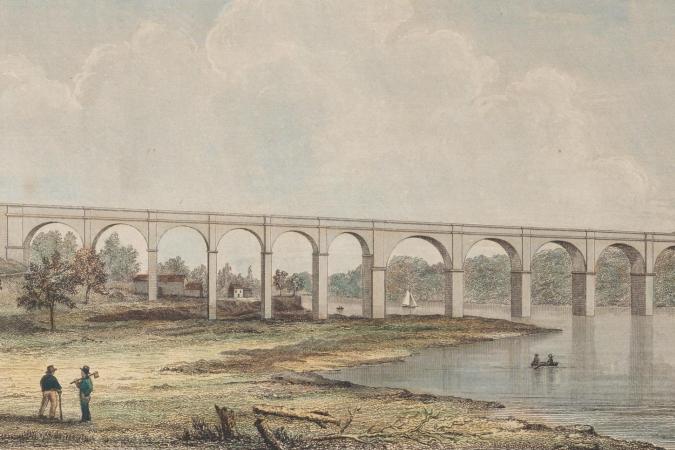To Quench the Thirst of New Yorkers
The Croton Aqueduct at 175
September 2 - December 31, 2017

Back to Past Exhibitions
Uncover the hidden history of New York’s original water source, buried beneath the city.
On October 14, 1842, New Yorkers lined the streets to watch the largest parade that the young city had ever seen. The occasion celebrated a new sight in New York: fountains spraying clean, fresh water into the late fall air. The Croton Aqueduct, an unparalleled engineering feat, had finally been completed, bringing water from the Croton River through 41 miles of masonry, fed by gravity alone. For a city surrounded by brackish, polluted waterways, underserved by public water pumps, prone to fire, and plagued by epidemics of water-borne disease, the fountains were indeed a sight to see, and they pointed to a future where clean water was an everyday aspect of city life.
To Quench the Thirst of New Yorkers: The Croton Aqueduct at 175 traces the history of this remarkable water system. The exhibition showcases the letters and drawings of Fayette B. Tower, a young engineer who worked on the aqueduct, and features newly commissioned photographs by Nathan Kensinger, tracing the aqueduct’s route and revisiting sights that Tower had sketched nearly two centuries before.
Sponsors
To Quench the Thirst of New Yorkers: The Croton Aqueduct at 175 is made possible by Theodore W. Scull.


